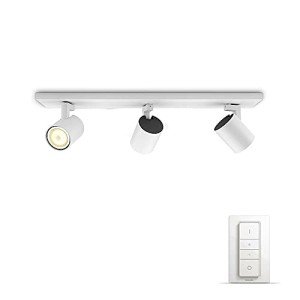A Peek Inside The Secrets Of Contemporary Lighting UK

Contemporary Lighting in the UK: Transforming Spaces with Illumination
Lighting plays a vital function in specifying the atmosphere and performance of any area. In the UK, contemporary lighting has emerged as a substantial style element, providing ingenious services that mix aesthetics with functionality. This article explores the different styles, materials, and innovations shaping contemporary lighting, along with pointers for choosing the most ideal fixtures for various settings.
The Evolution of Contemporary Lighting
Contemporary lighting in the UK reflects the changing tastes and technological developments in design. It encapsulates a broad array of styles, including:
- Minimalist: Characterized by simpleness and tidy lines, minimalist lighting fixtures concentrate on kind and function without unneeded decorations.
- Industrial: Inspired by metropolitan settings, industrial lighting integrates raw materials like metals and woods with bold styles, producing edgy, practical pieces.
- Scandinavian: Known for its heat and simpleness, Scandinavian lighting often features soft colors and natural products, concentrating on developing a cozy atmosphere.
- Smart Lighting: This modern trend integrates innovation with style, permitting users to control their lighting with mobile apps, voice commands, or automation systems.
To illustrate the advancement and variety in the field of contemporary lighting, think about the table listed below, which highlights key characteristics of different styles.
| Design | Key Characteristics | Popular Materials | Ideal Spaces |
|---|---|---|---|
| Minimalist | Simple, practical styles | Metal, glass, wood | Modern homes, workplaces |
| Industrial | Raw, incomplete appearance | Steel, concrete, wood | Lofts, galleries |
| Scandinavian | Comfortable, warm visual appeals | Natural fibers, light wood | Living spaces, coffee shops |
| Smart | Integrated technology, automation | Differs extensively | Homes, offices, retail spaces |
Selecting Contemporary Lighting Fixtures
Picking the ideal lighting fixtures for an area requires cautious consideration of numerous aspects. Here are crucial components to bear in mind:
1. Function of the Space
Before choosing fixtures, consider the desired use of the area. Various functions require various types of lighting:
- Task Lighting: Focused illumination for activities such as reading, cooking, or studying. Examples consist of table lamps and under-cabinet lights.
- Ambient Lighting: General lighting that provides total lighting. Buy Outdoor Lamps UK and pendant fixtures fall under this category.
- Accent Lighting: Designed to highlight specific features or areas, such as art work or architectural details. Wall sconces and mounted lights prevail options.
2. Design and Theme
The lighting should match the existing design. Go with fixtures that match or boost the general style of the area, whether it's contemporary, rustic, or diverse.
3. Size and Scale
Think about the proportion of the lighting fixtures relative to the area. A large chandelier may look stunning above a spacious dining table, while smaller pendant easy work well in compact settings.
4. Energy Efficiency
With rising energy costs and environmental concerns, picking energy-efficient lighting alternatives is necessary. LED lights are an excellent choice, using durability and lower energy consumption.
5. Flexibility
In modern design, flexibility is essential. Fixtures that can be changed or rearranged enhance functionality, permitting users to produce different environments as needed.
Popular Contemporary Lighting Brands in the UK
The contemporary lighting market in the UK boasts many brand names understood for their innovative designs and quality workmanship. Some notable points out include:
- FLOS: An Italian brand name celebrated for its creative and iconic light fixtures that frequently function as art pieces.
- Tom Dixon: A British designer acknowledged for his modern, industrial designs that wonderfully integrate metal and light.
- Anglepoise: Known for its versatile, practical lamps, best for a range of settings from home offices to imaginative studios.
- John Lewis: Offers a variety of contemporary lighting services that deal with a more comprehensive audience, including affordable yet trendy choices.
Frequently Asked Questions about Contemporary Lighting in the UK
1. What is contemporary lighting?
Contemporary lighting describes lighting designs and fixtures that reflect present design trends, frequently defined by tidy lines, ingenious shapes, and making use of modern materials and innovations.
2. How do I choose the right lighting for my home?
Consider the function of the room, existing décor, size of fixtures, energy effectiveness, and versatility. Evaluate how each piece will contribute to the general atmosphere and functionality of your space.
3. What are some energy-efficient lighting choices offered in the UK?
LED lights are the most popular energy-efficient alternative, understood for their long lifespan and low energy usage. Compact fluorescent lights (CFLs) and halogen bulbs are other options.
4. Where can I shop for contemporary lighting in the UK?
Contemporary lighting can be found in different retail outlets, both online and in physical shops. Significant sellers include John Lewis, Habitat, and specialized lighting stores.
5. Can contemporary lighting work in traditional spaces?
Absolutely! Contemporary lighting can boost traditional spaces when selected thoughtfully. Choosing fixtures with a balance between modern and traditional elements can produce an unified style.
Contemporary lighting in the UK represents more than just illumination; it embodies style innovation and imagination, transforming spaces and boosting functionality. As trends continue to develop, homeowners and designers alike can explore an extensive series of designs and technologies, ensuring that every room bursts with life, warmth, and character. By considering the necessary aspects laid out in this short article, one can curate a collection of lighting fixtures that resonates with individual design and fulfills useful requirements, ultimately shaping comfy and visually attractive environments.

